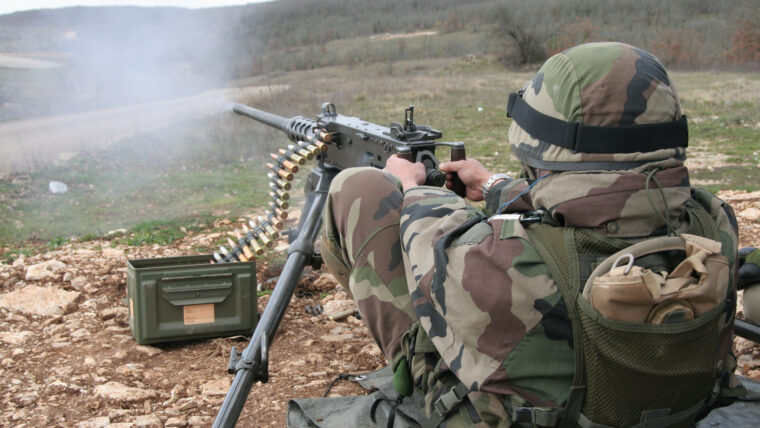
Browning Automatic Rifle
Military Weapons: The M2 Browning .50-cal
By John D. GreshamWhen one thinks back to the weapons of mass destruction that emerged in the 20th century, usually the atomic bomb or poison gas come to mind. Read more

Browning Automatic Rifle
When one thinks back to the weapons of mass destruction that emerged in the 20th century, usually the atomic bomb or poison gas come to mind. Read more

Browning Automatic Rifle
On a cold, dark December morning in 1944, B Company, 1st Battalion, 15th Regiment began the slow ascent up Hill 351. Read more

Browning Automatic Rifle
Private Armand Lorenzi and his fellow soldiers were advancing through a snowy German forest when enemy machine guns opened fire. Read more

Browning Automatic Rifle
On August 6, 1942, the men of Maj. Gen. Alexander Vandegrift’s U.S. 1st Marine Division watched from the railings as their troopship, the USS George F. Read more

Browning Automatic Rifle
The tennis-shoed soldiers emerged from the darkness on July 6, 1953, like a “moving carpet of yelling, howling men [with] whistles and bugles blowing, their officers screaming, driving their men” against the Americans as they swept up Pork Chop Hill (Hill 255), recalled Private Angelo Palermo. Read more

Browning Automatic Rifle
By James G. Bilder
Described in one U.S. Army report as “the quiet paradise for weary troops,” the tiny nation of Luxembourg was viewed by American commanders in late 1944 much like Belgium—liberated, safe, and an ideal location for combat-worn troops to rest and for untested replacements to get exposed to outdoor living and military routine before being exposed to combat. Read more

Browning Automatic Rifle
On September 17, 1944, a massive but hastily planned airborne invasion of the Netherlands was launched. Codenamed Market-Garden, the operation called for three Allied airborne divisions (British 1st and American 82nd and 101st) to land along a narrow corridor reaching from advanced positions along the Dutch-Belgian border to a bridgehead on the northern bank of the Rhine River at Arnhem. Read more

Browning Automatic Rifle
In April 1942, a group of young Marines, having recently graduated from Officers Candidate School, arrived at New River, North Carolina, a sprawling tent city that stretched over a vast area and would eventually become known as Camp Lejeune. Read more

Browning Automatic Rifle
It was with great anticipation that I sprang up the snowy steps of a Milwaukee building in January 1942 and entered the Marine Corps Recruitment Center. Read more

Browning Automatic Rifle
In 1917, when America entered the First World War, the United States Army tasked Brigadier General John T. Read more